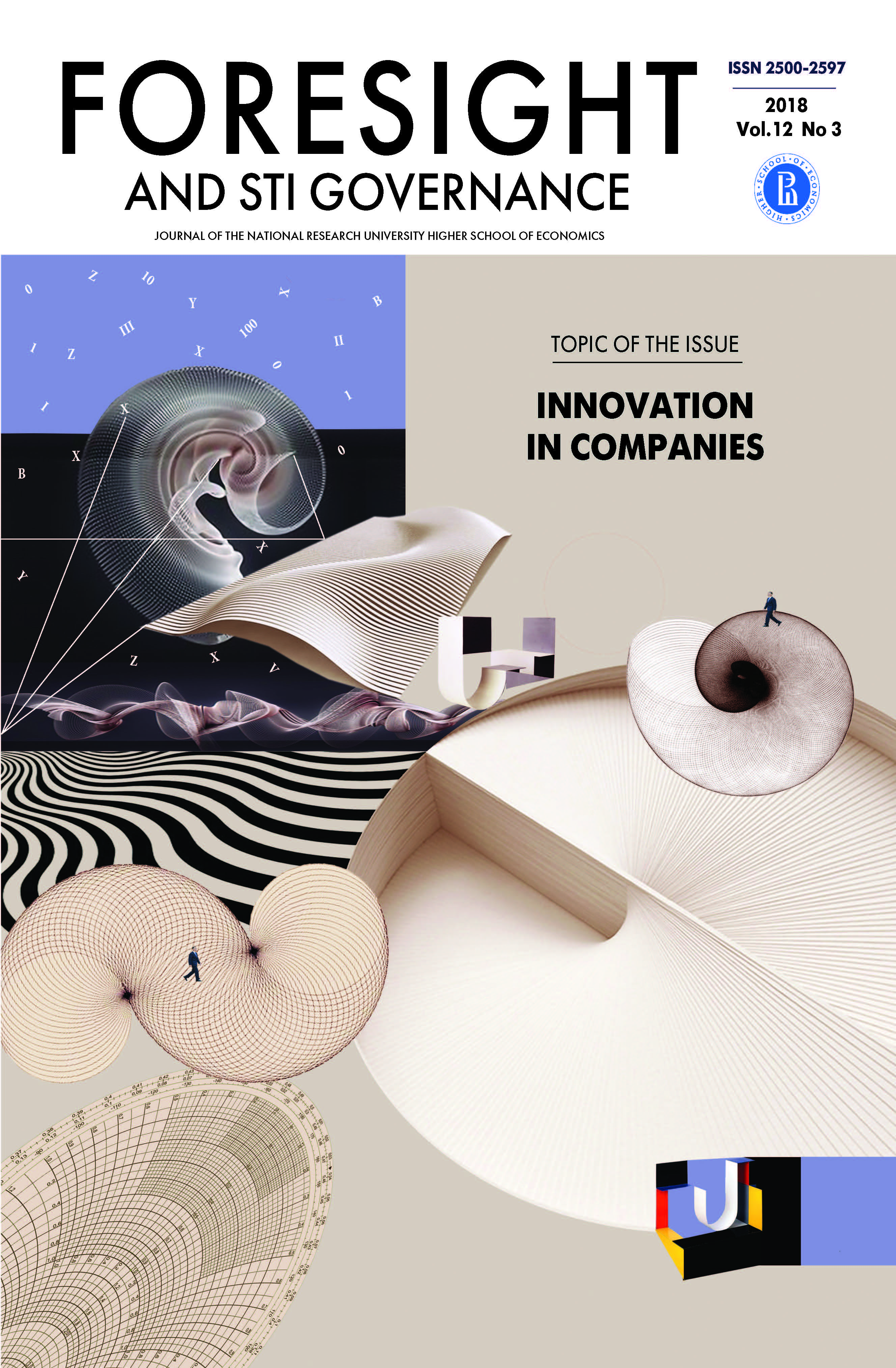Abstract
Many countries are directing their attention to the support of technological innovation with the intent to obtain economic and social benefits at home while positioning themselves for high margin, high technology export markets. The under-considered and under-exploited role of arts, humanities and social science in innovation is explored in this study. Examples of programs and activities in a variety of countries are illustrated. Insight into why the arts, humanities and social sciences are important to the generation of social and economic benefits through innovation is offered. Furthermore, recommendations are provided for better accessing the benefits that the arts, humanities and social science can provide.
References
Barras R. (1986) Towards a Theory of Innovation in Services // Research Policy. Vol. 15. P. 161-173.
Bullen E., Robb S., Kenway J. (2004) ‘Creative destruction': Knowledge economy policy and the future of the arts and humanities in the academy // Journal of Education Policy. Vol. 19. № 1. P. 3-22.
European Commission (2014) HORIZON 2020 - Work Programme 2014-2015 (Annex G. Technology Readiness Levels (TRL) as Defined by the Commission Decision C(2014)4995). Brussels: European Commission. Режим доступа: https://ec.europa.eu/research/participants/data/ref/h2020/wp/2014_2015/annexes/h2020-wp1415-annex-g-trl_en.pdf, дата обращения 15.05.2018.
Fri R.W., Savitz M.L. (2014) Rethinking energy innovation and social science // Energy Research and Social Science. Vol. 1. P. 183-187.
Gokhberg L., Sokolov A. (2017) Technology foresight in Russia in historical evolutionary perspective // Technological Forecasting and Social Change. Vol. 119. P. 256-267.
Gokhberg L., Sokolov A., Chulok A. (2017) Russian S&T Foresight 2030: Identifying New Drivers of Growth // Foresight. Vol. 19. № 5. P. 441-456. Режим доступа: , дата обращения 19.03.2018. DOI: https://doi.org/10.1108/FS-07-2017-0029
Gulbrandsen M., Aanstad S. (2015) Is innovation a useful concept for arts and humanities research? // Arts and Humanities in Higher Education. Vol. 14. № 1. P. 9-24.
Hammer M., Champy J. (1993) Reengineering the Corporation. Harper Collins: New York.
Hawkins R., Langford C.H., Saunders C. (2015) Assessing the practical application of social knowledge: A survey of six leading Canadian universities // Research Policy. Vol. 44. № 1. P. 83-95.
Jenkins N. (2015) Alarm over huge cuts to humanities and social science at Japanese universities // Time Magazine, September 16. Режим доступа: http://time.com/4035819/japan-university-liberal-arts-humanities-social-sciences-cuts/, дата обращения 17.07.2018.
Klein K.J., Sorra J.S. (1996) The challenge of innovation implementation // Academy of Management Review. Vol. 21. № 4. P. 1055-1080.
Lavoie M. (2011) The role of social scientists in accelerating innovation in regenerative medicine // Review of Policy Research. Vol. 28. № 6. P. 613-630.
Linton J.D. (2009) De-Babelizing the Language of Innovation // Technovation. Vol. 29. № 11. P. 729-737.
Lundstroma A., Zhou C. (2011) Promoting innovation based on social sciences and technologies: The prospect of a social innovation park // Innovation. Vol. 24. № 1-2. P. 133-149.
Mitchell W. (1994) Playing leap-frog with Elephants: EMI, Ltd. and CT scanner competition in the 1970s. A Case Study by the University of Michigan Business School. Режим доступа: http://www-personal.umich.edu/~afuah/cases/case4.html, дата обращения 11.03.2018.
Murphy J., Parry S., Walls J. (2016) The EPSRC's Policy of Responsible Innovation from a Trading Zones Perspective // Minerva. Vol. 54. № 2. P. 151-174.
NISTEP (2017) Efforts aimed at realizing a sustainable aging society and low carbon society (Part 2 - Study on the ideal way of living in the area) // STI Horizon. Vol. 3. № 1. Режим доступа: , дата обращения 15.02.2018. DOI: https://doi.org/10.15108/stih.00070
Rogers E.M. (1995) The Diffusion of Innovations (4th ed). New York: Free Press.
SAE (2014) Taxonomy and Definitions for Terms Related to On-Road Motor Vehicle Automated Driving Systems J3016_201401. Режим доступа: https://www.sae.org/standards/content/j3016_201401/, дата обращения 15.05.2018.
Teixeira A.A.C., Vieira P.C., Abreu A.P. (2017) Sleeping Beauties and Their Princes in Innovation Studies // Scientometrics. Vol. 110. № 2. P. 541-580.
Tornatzky L.G., Fleischer M. (1990) The Process of Technological Innovation. Lexington: Lexington Books.
Turcanu C., Schroder J., Meskens G., Perko T., Rossignol N., Carle B., Hardeman F. (2016) Like a bridge over troubled water - Opening pathways for integrating social sciences and humanities into nuclear research // Journal of Environmental Radioactivity. Vol. 153. № 88-96.
Wise R., Baumgartner P. (2000) Go downstream: The new profit imperative in manufacturing // IEEE Engineering Management Review. Vol. 28. P. 89-96.
Yin R.K. (1978) Changing Urban Bureaucracies: How New Practices Become Routinized. Santa Monica, CA: Rand Corporation.
Yin R.K. (1992) Measuring success in AMT implementation using customer-supplier interaction criteria // International Journal of Operations and Production Management. Vol. 12. № 10. P. 34-55.
Zmud R.W., Apple E. (1992) Measuring Technology Incorporation/Infusion // Journal of Product Innovation Management. Vol. 9. № 2. P. 148-155.
von Hippel E. (2017) Free Innovation. Boston, MA: MIT Press.
von Krogh G., Spaeth S. (2007) The open source software phenomenon: Characteristics that promote research // Journal of Strategic Information Systems. Vol. 16. № 3. P. 236-253.

This work is licensed under a Creative Commons Attribution 4.0 International License.

